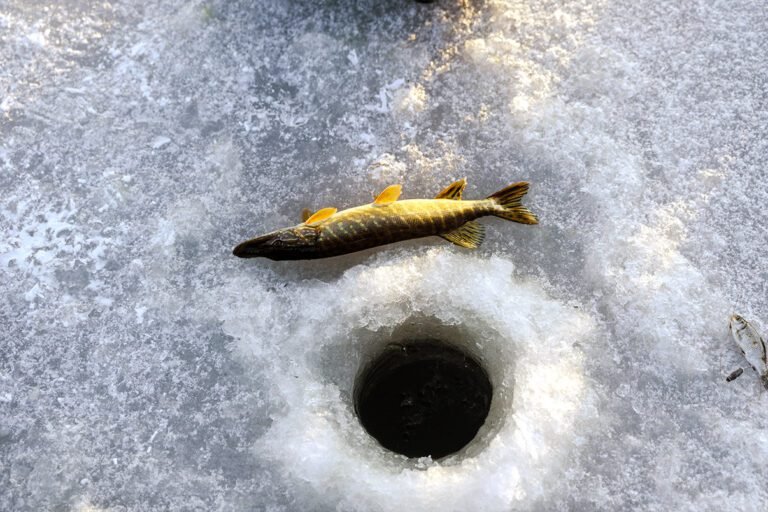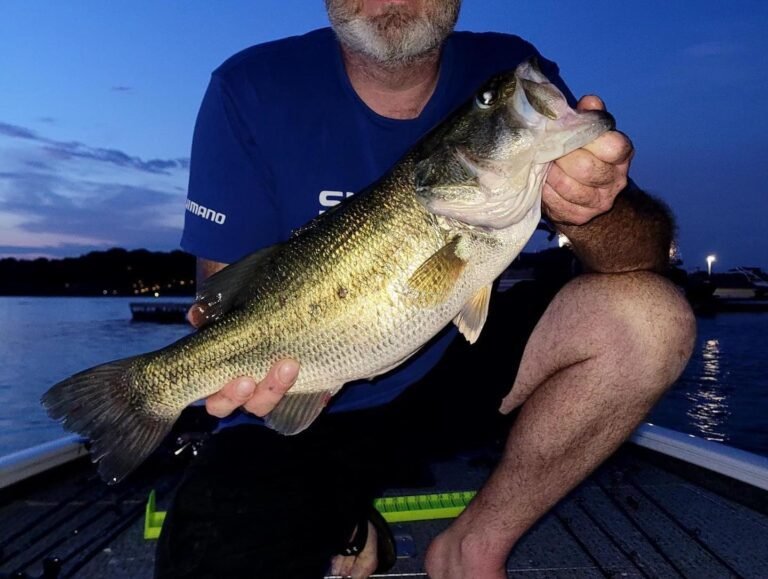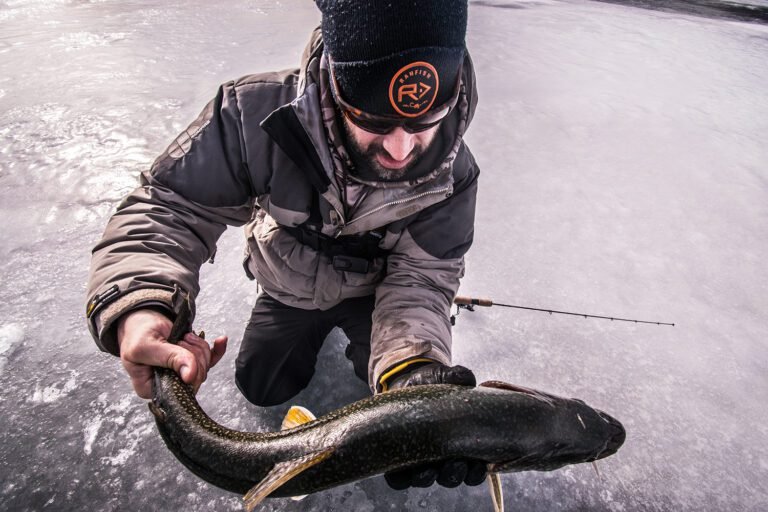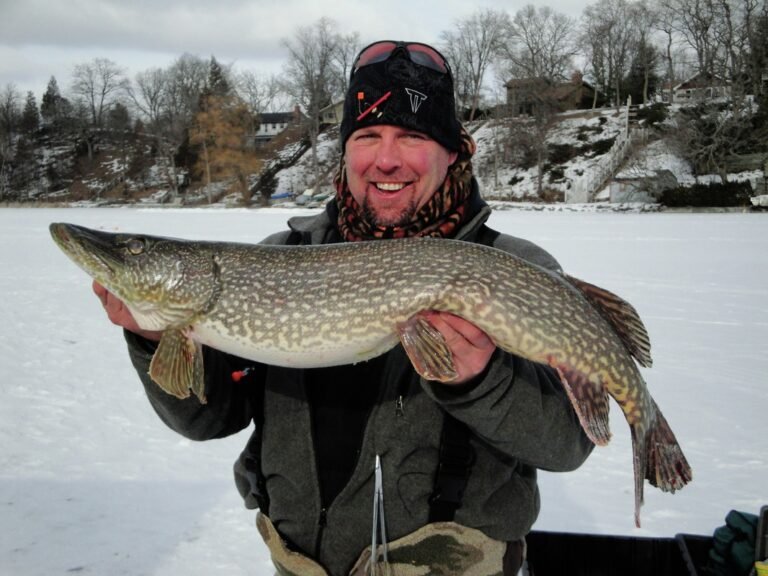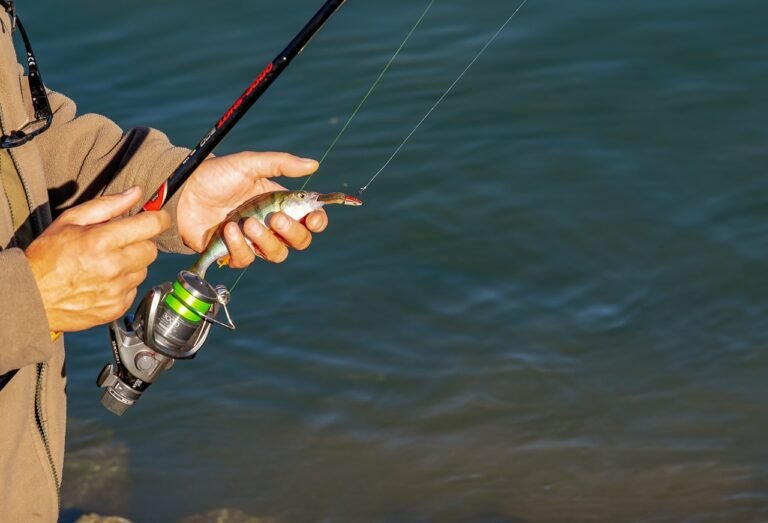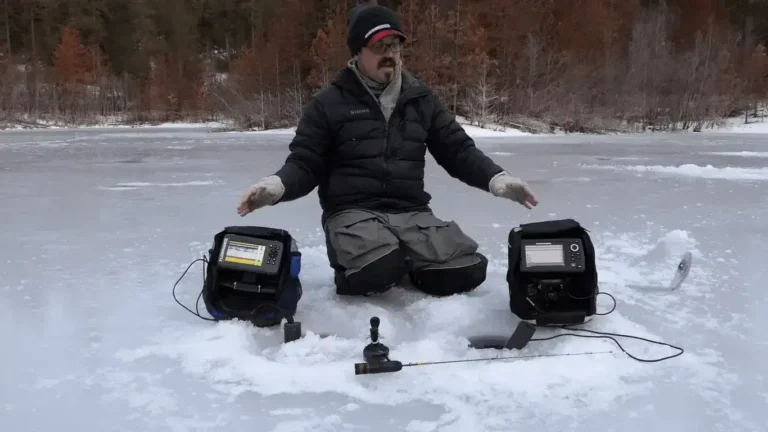Ice fishing for bass is a favorite wintertime activity that demands a bit of practice and the right gear. It involves drilling a hole via the ice and using specialized baits and lures to grab fish that are active in the colder water.
Bass is a common target for ice fishing, as they can be discovered in many freshwater lakes and rivers throughout the country. This article will provide important tips and techniques for successfully catching bass via the ice. With the right understanding and technique, you can have a successful and delightful ice fishing trip for bass.
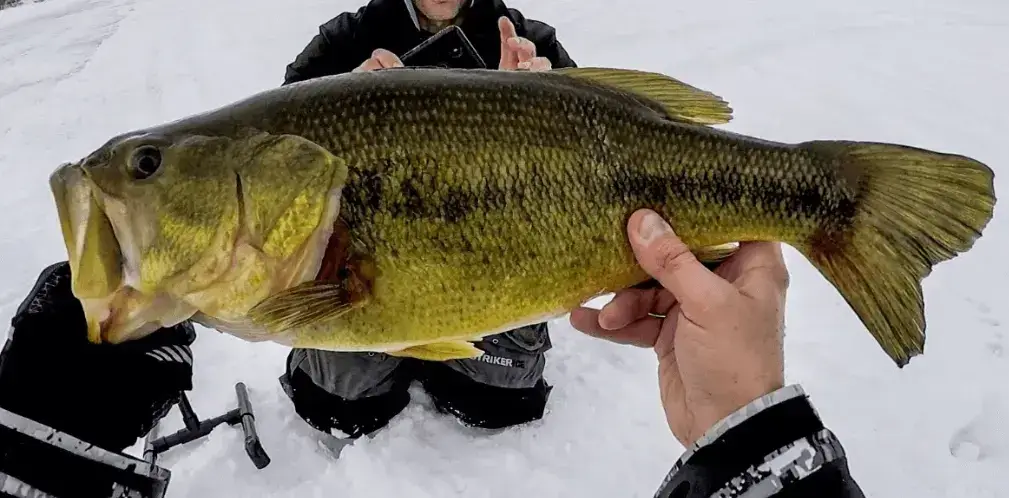
Understanding Bass Behavior
Bass are known to be aggressive and opportunistic feeders, which makes them a favored target for ice fishing. However, their behavior can vary depending on the time of the year and water temperature. They are cold-blooded fish, so their metabolism and activity levels decrease in colder water temperatures.
In the winter, a bass generally moves to deeper, warmer waters to survive the freezing temperatures. They also become less active and, thus, harder to catch. Anglers usually succeed using slow-moving baits or jigs and targeting locations near warm water discharge or underwater structures. It’s also necessary to note that the feeding habits of bass may change during the winter months, so it can be useful to experiment with various types of bait or lures.
Essential Gear For Ice Fishing For Bass In 2024
Ice fishing for bass demands precise gear to provide a successful and safe experience. Here are some basic items to consider:
Ice Fishing Auger
An auger is used to drill holes in the ice. Look for an auger with a power head that can quickly drill via thick ice.
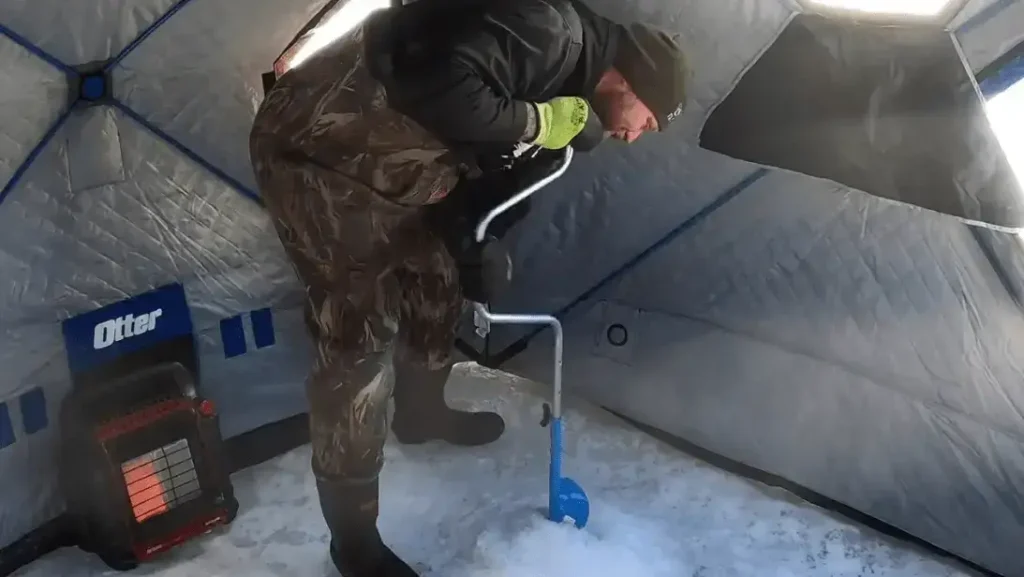
Ice Fishing Rod and Reel
Use a medium light to medium power rod with a fast-action tip paired with a spinning reel. Ensure the reel is spooled with a monofilament or fluorocarbon line that can tolerate cold temperatures.
Ice Fishing Jigs and Lures
Jigs and lures that mimic the natural prey of bass, such as minnows or worms, are sufficient when fishing through the ice.
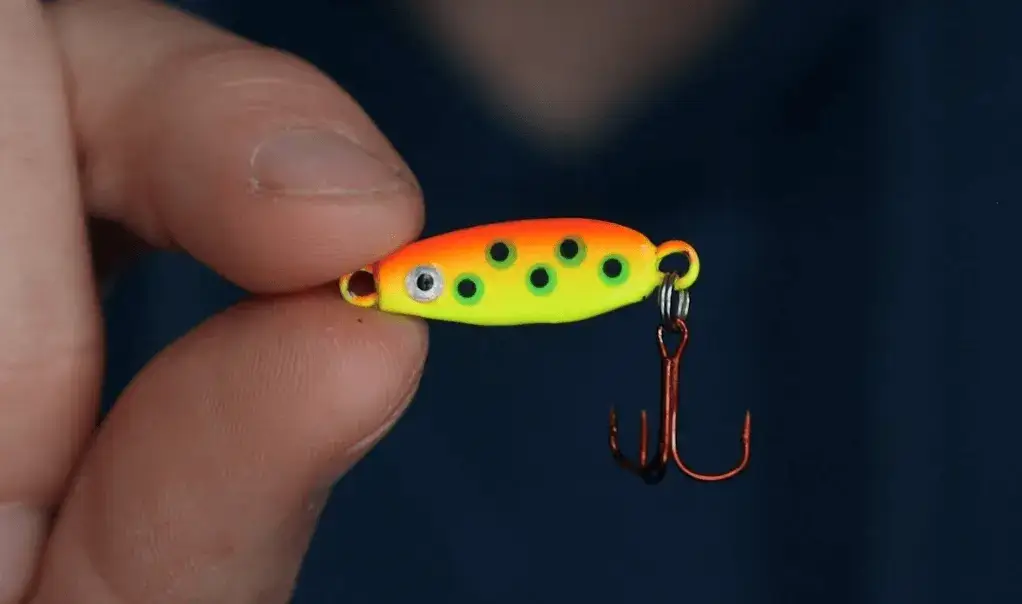
Warm Clothing
Dress in layers to stay warm. Wear insulated ice fishing boots, gloves, and a hat to protect against freezing.
Bait Bucket
A bait bucket is useful for keeping your bait alive and fit.
Heater
A portable heater can be a lifesaver when fishing in frigid temperatures.
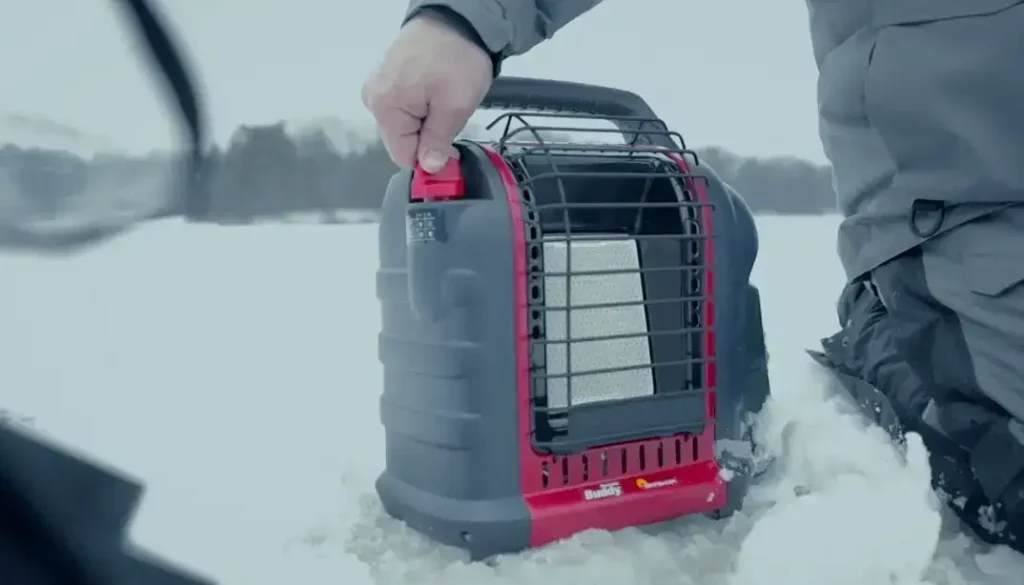
Chair
A comfy seat will make your fishing experience more delightful.
Having these important gear before going ice fishing will make your fishing adventure more enjoyable and successful.
Finding the Right Location
When it comes to ice fishing for bass, location is key. Look for places with deep drop-offs, weed beds, or different structures that can hold concentrations of fish. Keep in mind that bass manages to move to deeper waters during the winter, so you’ll want to drill your holes in locations that are at least 10-15 feet deep.
Ice Fishing For Bass Tips
Once you have the right equipment, it’s time to focus on techniques to catch bass through the ice. Winter bass fishing can be challenging due to the freezing water temperatures and lowered activity of the fish. However, there are a few tactics that can boost your chances of success.
Fish Deeper
In the winter, the bass often moves to deeper waters to escape the chilly surface temperatures. Look for drop-offs, ledges, and other structures that hold baitfish, and concentrate your fishing efforts in those areas.
Drill Multiple Holes
Drilling multiple holes allows you to fish in different depths and areas, increasing your chances of finding bass.
Slow Down
Bass is less active in the winter, so you’ll need to slow down your retrieve to offer them more time to react. Use a slow, steady retrieve or even a dead-stick strategy to hold your bait in front of the fish longer.
Fish At Dawn and Dusk
Bass will be more active during the warmer parts of the day, so concentrate your fishing efforts during the early morning and late evening.
Use Natural Colored Baits
During the winter, bass will usually be more interested in natural colored baits such as silver, gold, and brown.
Try Different Lures
Test with different lures such as jigs, soft plastic baits, and crank-baits to find out what the bass is biting on.
Fish Near Cover
Winter bass often gather around covers such as logs, brush piles, and rocks.
Use a Heavier Line
Cold water can make the fish lazy, so a heavier line can assist you in getting a good hook-set and allow you to reel in the fish once you get a bite.
Use Electronics
Fish Finder can be a massive help for ice fishing. It allows you to discover the fish under the ice, and thus you can know the depth and spot of the fish. For more about fish finders, check out our guide of the best fish finders.
Jigging For Bass
To fish a jig, drop it to the bottom and then lift it up and down in a jerking action. It mimics the motion of a struggling baitfish and can trigger a predatory response in the bass. Be sure to concentrate on your line, as bass usually gives a subtle bite before running off with the bait.
It’s significant to experiment with various jigging techniques and to pay attention to the water temperature and the period of the day. As I mentioned above, During the winter, bass tends to move to deeper waters where the temperature is more steady, and they become less active, so it’s meaningful to use slower, more subtle presentations to entice a bite.
In addition to jigs, other useful lures for ice fishing for bass contain spoons and soft plastic baits.
Ice Fishing for Largemouth Bass
Ice fishing for largemouth bass is possible, but it is necessary to note that largemouth bass is a warm-water species and are normally not found in the same bodies of water as cold-water fish like northern pike or walleye, which are more commonly targeted during ice fishing.
Additionally, largemouth bass is less active in the chilly months and may not be as effortlessly caught via the ice. Anglers targeting largemouth bass during the winter should concentrate on locating areas of open water or places where the water is slightly warmer, such as near a power plant or a discharge from a dam. It’s also vital to follow all local fishing regulations and guidelines for ice fishing.
Ice Fishing For Smallmouth Bass
Smallmouth bass is known for its hard-fighting nature and delicious taste. You can find it in various water bodies, including rivers, lakes, and ponds. To get started with ice fishing for smallmouth bass, you will need to find a body of water that is known to have a healthy population of smallmouth bass.
Smallmouth bass is known to be bold feeders, so live bait such as minnows or worms can effectively catch them. Jigs, spoons, and soft plastics can also be the right lures to use.
When ice fishing for smallmouth bass, it’s vital to know the deepness of the water you are fishing. Smallmouth bass is known to move in shallow water, so targeting those spots is a good start.
Ice Fishing for Bass In Ponds
Ice fishing for bass in ponds differs from fishing for bass in other bodies of water, such as lakes or rivers. Ponds are generally smaller and more enclosed, which can impact the movement and manners of the bass. More, the food sources and habitats for bass in ponds may differ from those in bigger bodies of water.
Ice fishing for bass in ponds can also be different regarding the types of lures and methods used. Since the pond is short, you may need to use smaller lures or jigs to attract the bass. Also, you may need to drill numerous holes in the ice to cover different pond areas and locate where the bass are. It’s also necessary to note that the ice thickness can vary in different pond areas, so you should always inspect the ice thickness before venturing out and be aware of the weather conditions.
How Deep Do Bass Go
The depth at which you can locate bass can vary depending on the species and the precise body of water. In general, bass tends to move in shallow water, normally between 2 and 10 feet deep, but they can also be seen in deeper water.
The largemouth bass is known to be discovered in water up to 20 feet deep, while the Smallmouth bass is found in water up to 50 feet deep. They tend to move in shallow water during the warmer months and deeper water during the chillier months.
Minnow Lures For Bass
Minnow lures are a favorite choice for bass fishing, as they closely mimic the appearance and action of live minnows, a common food source for bass. Several types of minnow lures can be used for bass fishing, including:
- Crankbaits: These lures are created to mimic the swimming action of minnows and can be fished at different depths. They come in a variety of colors and sizes and can be used to target both largemouth and smallmouth bass.
- Jerkbaits: These lures have a fast, erratic action that mimics the movements of wounded or dying minnows. They are usually used for casting and retrieval and can be fished at different depths.
- Swimbaits: These lures mimic minnows’ swimming action and can be fished at various deepness. They are available in various sizes and pigments and are usually used to target both largemouth and smallmouth bass.
- Soft Plastics: Soft plastic lures such as worms, grubs, and shad can also mimic minnows and can be utilized in different ways, such as Texas-rigged, jighead-rigged, or on a drop-shot.
FAQs:
why does bass not bite in the winter?
Bass metabolism slows in cold water, making them less active and less likely to bite. Additionally, the availability of food is limited in winter.
what colors do bass like in the winter?
In the winter, the bass may prefer natural-looking colors such as chartreuse, silver, or white. Darker colors like black or purple may also be effective in stained or muddy water.
Conclusion:
Ice fishing for bass can be a difficult yet rewarding experience. You can boost your chances of success by understanding bass behavior, using the right gear, finding the right location, and using effective techniques.

